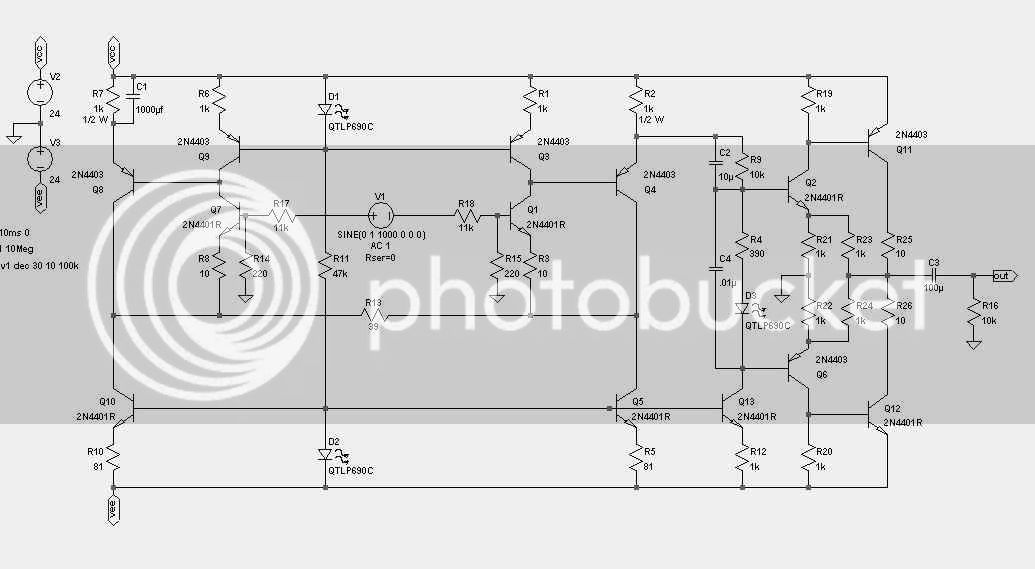Samuel Groner
Well-known member
Hi
I'm currently working on a universal discrete balanced line receiver for EQs, compressors, summing boxes etc. My criterions were:
* good audio performance
* avoidance of the "Pin 1" problem
* reasonably high CMRR
* good RFI protection
* balanced input impedances
* class A output into 4k ohm up to clipping
* running on +/- 18 V, easy to adapt for other voltages
* easy to build (no semiconductor matching and selecting)
* cheap and easy to source parts
That's how it looks right now: [removed]
I decided against variable gain as this would have involved more elaborate circuitry. The CFP buffers in front are necessary to get balanced differential input impedances.
A question: Would Q301/Q302 benefit from clamping diodes or are D101/D102/... enough protection?
Any other suggestions and wishes welcome!
Samuel
I'm currently working on a universal discrete balanced line receiver for EQs, compressors, summing boxes etc. My criterions were:
* good audio performance
* avoidance of the "Pin 1" problem
* reasonably high CMRR
* good RFI protection
* balanced input impedances
* class A output into 4k ohm up to clipping
* running on +/- 18 V, easy to adapt for other voltages
* easy to build (no semiconductor matching and selecting)
* cheap and easy to source parts
That's how it looks right now: [removed]
I decided against variable gain as this would have involved more elaborate circuitry. The CFP buffers in front are necessary to get balanced differential input impedances.
A question: Would Q301/Q302 benefit from clamping diodes or are D101/D102/... enough protection?
Any other suggestions and wishes welcome!
Samuel




